#giuliano della rovere
Text

I love the way their rivalry and antagonism binds them together ngl

Julius II: The Warrior Pope, Christine Shaw
⭐ places I’m at! bsky / pixiv / pillowfort /cohost / cara.app / tip jar!
#there was that one incident where Giuliano was trying to force Rodrigo to chose one or the other and all of That involving#Ascanio’s possessions like my god okay just eat the man already and call it a day#as per usual Vincula is della Rovere etc#italian renaissance tag#komiks tag#ascanio sforza#giuliano della rovere#anyway their dynamic is fun bc they genuinely wanted to hurt each other in some kind of way and ohhhhhhh wow#there’s so much to do with that
168 notes
·
View notes
Text
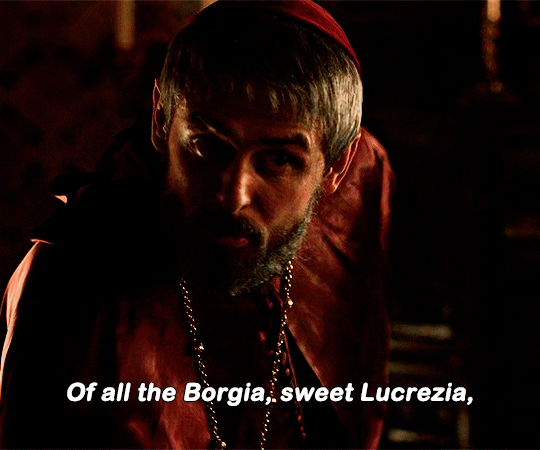

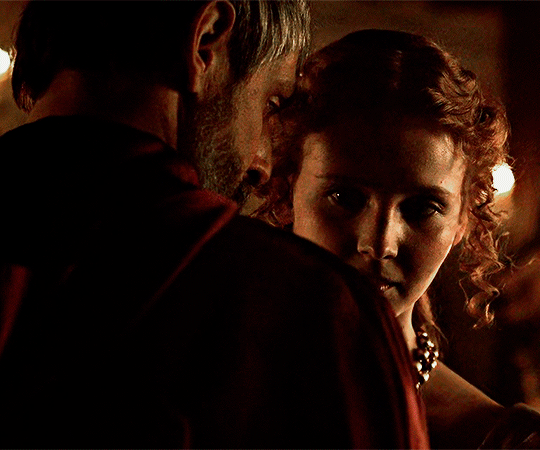

— And when my husband ascends to the ducal throne, I will have his ear, and you will know no better friend than the Duchess of Ferrara.
#tvedit#perioddramaedit#borgiaedit#borgia#lucrezia borgia#giuliano della rovere#userclayy#userhayf#usermyr#by tha
243 notes
·
View notes
Text
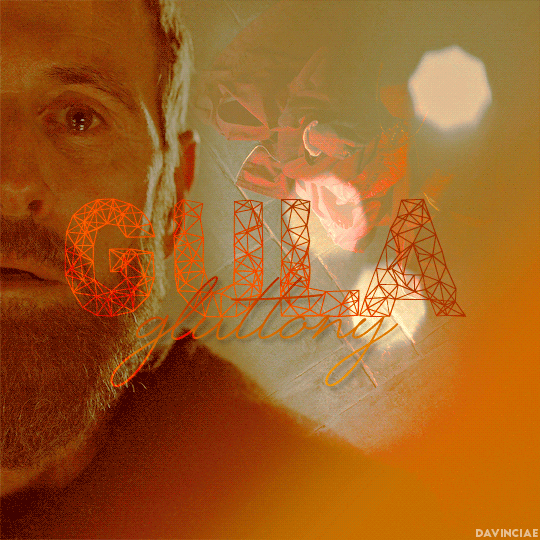


THE SEVEN DEADLY SINS OF THE BORGIAS || 2023
╚ G L U T T O N Y - giuliano della rovere
"a great wine, like the papacy itself, mature, rounded, its roots in the soil, its boquet in the heavens, consumed by a monkey."
2013 edition
#the borgias#giuliano della rovere#colm feore#borgiasins23#theborgiasedit#borgiasedit#perioddramaedit#dailyborgia#tvedit#periodedit#my gifs#macaulaeys#usersjen#ulliell#yaomei#anakinskvwalkcr#sandushengshou#spoiler alert this is the only placement i've changed in ten years#in large part because. truly. who caaares about the french king
45 notes
·
View notes
Photo
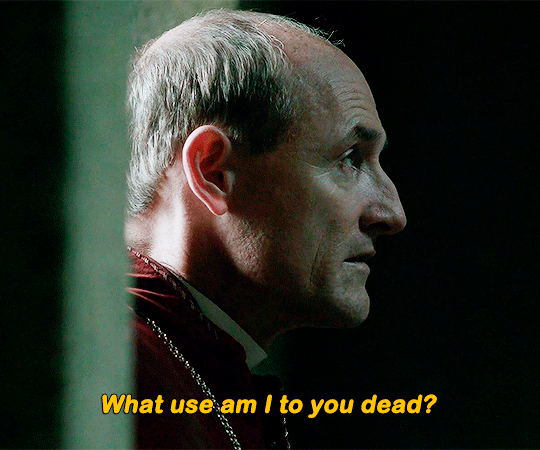




THE BORGIAS (2011-2013)
#the borgias#theborgiasedit#perioddramaedit#gifshistorical#cesare borgia#giuliano della rovere#userclayy#usersavana#userlj#userhayf#duchessofhastings#tusershay#userjasmine#tusermarissa#ours#by tha
278 notes
·
View notes
Photo


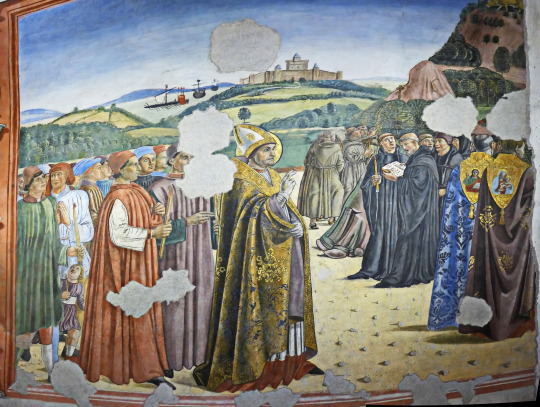
Antoniazzo Romano: Cappella die Bessarione, Santi Apostoli, Rome.
My Guy - for reference and for reasons.
3 notes
·
View notes
Text
Giuliano della Rovere e gli uomini d'arme di Anghiari.
Giuliano della Rovere e gli uomini d’arme di Anghiari.
Terre degli Uffizi: l’inedito legame fra il Papa Guerriero Giuliano della Rovere e gli uomini d’arme di Anghiari.
Dal 22 maggio al 25 settembre 2022 al Museo della Battaglia e di Anghiari la mostra racconta e spiega la permanenza di Giuliano della Rovere ovvero Papa Giulio II, nella città toscana.
L’inedito legame fra Giulio II, il “Papa Guerriero”, con la cittadina toscana degli uomini d’arme,…
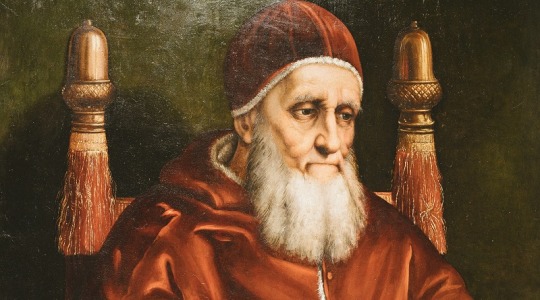
View On WordPress
0 notes
Text
Bibliografia
A. Colella, L’esodo dalle terre adriatiche – Rilevazioni statistiche, Opera per l’Assistenza ai Profughi Giuliani e Dalmati, 1958
A. Santin, Al tramonto. Ricordi autobiografici di un vescovo, 1978
L. Vivoda, L’esodo da Pola - agonia e morte di una città italiana, Nuova LitoEffe, 1989
S. Cella, La liberazione negata. L’azione del Comitato di Liberazione Nazionale dell’Istria, Tipografia Del Bianco, 1990
R. Pupo, Venezia Giulia 1945. Immagini e problemi, Editrice Goriziana, 1992
S. Cella, Dal plebiscito negato all’esodo, ANVGD Gorizia, 1993
G. Perselli, I Censimenti della popolazione dell’Istria, con Fiume e Trieste, e di alcune città della Dalmazia tra il 1850 e il 1936, 1993
E. Bettiza, Esilio, Mondadori, 1996
R. Pupo, Violenza politica tra guerra e dopoguerra: foibe, deportazioni ed esodo delle popolazioni istriane e dalmate (1943-1956), in «Annali/Museo storico italiano della guerra», 1997
N. Milani, A. M. Mori, Bora. Istria, il vento dell’esilio, Marsilio, 1998
G. Nemec, Un paese perfetto. Storia e memoria di una comunità in esilio: Grisignana d’Istria (1930-1960), LEG Edizioni, 1998
F. Rocchi, L’esodo dei 350mila Giuliani Fiumani e Dalmati, Difesa Adriatica, 1998
F. Salimbeni, Le foibe, un problema storico, Unione degli Istriani, 1998
L. Vivoda, Campo profughi giuliani Caserma Ugo Botti, Istria Europa, 1998
N. Luxardo, Dietro gli scogli di Zara, Editrice Goriziana, 1999
A. Petacco, L’esodo, Mondadori, 1999
R. Spazzali, Epurazione di frontiera: le ambigue sanzioni contro il fascismo nella Venezia Giulia 1945-1948, LEG Edizioni, 2000
G. Rumici, Fratelli d’Istria: 1945-2000, italiani divisi, Ugo Mursia, 2001
M. Brugna, Memoria negata. Crescere in un centro raccolta profughi per esuli giuliani, Condaghes, 2002
G. Oliva, Foibe. Le stragi negate degli italiani della Venezia Giulia e dell’Istria, Mondadori, 2002
G. Rumici, Infoibati (1943-1945): i nomi, i luoghi, i testimoni, i documenti, Ugo Mursia, 2002
R. Pupo, R. Spazzali, Foibe, Mondadori, 2003
R. Marsetič, I bombardamenti alleati su Pola 1944-1945, 2004
E. Ratzenberger, Via Volta 2. Un’infanzia a Fiume, Edizioni Biografiche, 2005
G. Crainz, Il dolore e l’esilio. L’Istria e le memorie divise d’Europa, Donzelli, 2005
E. Miletto, Con il mare negli occhi. Storia, luoghi e memorie dell’esodo istriano a Torino, Franco Angeli, 2005
G. Paiano, La memoria degli Italiani di Buie d’Istria, 2005
M. Cattaruzza, L’Italia e il confine orientale, Il Mulino, 2007
L. Giuricin, La memoria di Goli Otok - Isola Calva, 2007
E. Miletto, Istria allo specchio. Storia e voci di una terra di confine, Franco Angeli, 2007
E. Rover, Cronache istriane di un esule, L. G. Ambrosini & C. Tipografia Editrice, 2008
G. Rumici, O. Mileta Mattiuz, Chiudere il cerchio. Memorie giuliano-dalmate. Primo volume: dall’inizio del Novecento al Secondo conflitto mondiale, ANVGD Gorizia - Mailing List HISTRIA, 2008
P. Sardos Albertini, Il rumore del silenzio:
la storia dimenticata dell’Adriatico orientale, 2008
S. Tazzer, Tito e i rimasti. La difesa dell’identità italiana in Istria, Fiume e Dalmazia, Libreria Editrice Goriziana, 2008
R. Turcinovich Giuricin, La giustizia secondo Maria. Pola 1947: la donna che sparò al generale brigadiere Robert W. De Winton, Del Bianco Editore, 2008
L. Vivoda, Quel lungo viaggio verso l’esilio, Istria Europa, 2008
G. Rumici, M. Cuzzi, R. Spazzali, Istria, Quarnero, Dalmazia: storia di una regione contesa dal 1796 alla fine del XX secolo, LEG Edizioni, 2009
E. Miletto, Arrivare da lontano. L’esodo istriano, fiumano e dalmata nel biellese, nel Vercellese e in Valsesia, Istituto per la storia della Resistenza e della società contemporanea nelle province di Biella e Vercelli “Cino Moscatelli”, 2010
G. Rumici, O. Mileta Mattiuz, Chiudere il cerchio. Memorie giuliano-dalmate. Secondo volume: il Secondo conflitto mondiale, ANVGD Gorizia - Mailing List HISTRIA, 2010
G. Oliva, Esuli. Dalle foibe ai campi profughi: la tragedia degli italiani di Istria, Fiume, Dalmazia, Mondadori, 2011
G. Nemec, Nascita di una minoranza. Istria 1947-1965: storia e memoria degli italiani rimasti nell’area istro-quarnerina, 2012
G. Rumici, O. Mileta Mattiuz, Chiudere il cerchio. Memorie giuliano-dalmate. Terzo volume: L’immediato dopoguerra, ANVGD Gorizia - Mailing List HISTRIA, 2012
L. Vivoda, In Istria prima dell’Esodo. Autobiografia di un esule da Pola, Istria Europa, 2012
V. Facchinetti, Protagonisti senza protagonismo. La storia nella memoria di giuliani, istriani, fiumani e dalmati nel mondo, La Mongolfiera, 2014
V. Petaros Jeromela, 11 luglio 1920: l’incidente di Spalato e le scelte politico-militari, 2014
R. Turcinovich Giuricin, … e dopo semo andadi via, Edizioni Laguna – ANVGD Gorizia, 2014
F. Molinari, Istria contesa. La guerra, le foibe, l’esodo, Ugo Mursia, 2015
G. Nemec, Dopo venuti a Trieste. Storie di esuli giuliano-dalmati attraverso un manicomio di confine 1945-1970, Alpha & Beta, 2015
A. Cuk, Cuori senza frontiere: il cinema del confine orientale, 2016
E. Varutti, Italiani d’Istria, Fiume e Dalmazia esuli in Friuli 1943-1960, 2017
O. Moscarda Oblak, Il “Potere Popolare” in Istria. 1945-1953, 2017
A. Cuk, La città dolente, Alcione Editore, 2020
R. Turcinovich Giuricin, R. Poletti, Tutto ciò che vidi. Parla Maria Pasquinelli. 1943-1945 fosse comuni, foibe, mare, Oltre Edizioni, 2020
R. Pupo, Adriatico amarissimo. Una lunga storia di violenza, Laterza, 2021
G. La Perna, Pola Istria Fiume 1943-1945. L’agonia di un lembo d’Italia e la tragedia delle foibe, Ugo Mursia, 2022
R. Pupo, Il lungo esodo: Istria : le persecuzioni, le foibe, l’esilio, Rizzoli, 2022
R. Spazzali, Pola. Città perduta. L’agonia, l’esodo (1945-47), Ares, 2022
R. Turcinovich Giuricin, Esuli due volte: dalle proprie case, dalla propria patria, Oltre Edizioni, 2022
E. Dionis Bernobi, Una vita appesa a un filo, 2023
R. Spazzali, Il disonore delle armi: Settembre 1943: l’armistizio e la mancata difesa della frontiera orientale italiana, Ares, 2023
E. Varutti, La patria perduta. Vita quotidiana e testimonianze sul Centro di Raccolta Profughi giuliano-dalmati di Laterina (1946-1963), Aska Edizioni, 2023
Documenti e articoli
Le vittime di nazionalità italiana a Fiume e dintorni (1939-1947) – Zrtve talijanske nacionalnosti u rijeci i okolici (1939-1947)
Mappa ed elenco delle foibe
Grido dell’Istria, n° 20, 21 e 41
Arnaldo Harzarich, l’angelo delle foibe
Documentari, incontri e lezioni
Adriatico amarissimo. La stagione delle fiamme e la stagione delle stragi
Conferenze del giovedì dell’ANVGD di Milano
Da quella volta non l’ho rivista più. Incontro con Raoul Pupo
Esodo. L’Italia dimenticata
Esodo. La memoria tradita
Istria: il ricordo che brucia (1, 2)
Le Foibe
Le foibe, l’esodo e la catastrofe dell’italianità adriatica
Il tempo del ricordo. Le foibe e l’esodo istriano-giuliano-dalmata
Vergarolla
Filmati storici
Martiri italiani. Le foibe del Carso (1946)
L’esodo da Pola. La salma di Nazario Sauro a Venezia (1947)
L’esodo degli italiani da Pola (1947)
Pola addio (1947)
Pola, una città che muore (1947)
Le condizioni dei profughi giuliani accolti a Roma (1948)
Fertilia (1949)
Piccoli profughi giuliani (1951)
A Sappada con i piccoli profughi giuliani (1952)
Siti utili
Archivio de L’Arena di Pola
Associazione Dalmati Italiani nel Mondo – Libero Comune di Zara in Esilio
Associazione delle Comunità Istriane
Associazione Fiumani Italiani nel Mondo – Libero Comune di Fiume in Esilio
Associazione Giuliani nel Mondo
Associazione Nazionale Venezia Giulia e Dalmazia
Associazione Nazionale Venezia Giulia e Dalmazia – Comitato Provinciale di Bologna
Associazione Nazionale Venezia Giulia e Dalmazia – Comitato Provinciale di Udine
Associazione Nazionale Venezia Giulia e Dalmazia – Comitato Provinciale di Venezia
Associazione Triestini e Goriziani in Roma
Centro di Documentazione Multimediale della Cultura Giuliana, Istriana, Fiumana e Dalmata
Centro di ricerche storiche Rovigno
Circolo di Cultura Istroveneta “Istria”
Comitato 10 Febbraio
Comunità di Lussinpiccolo
Coordinamento Adriatico
Deputazione di Storia Patria
Elio Varutti
FederEsuli
Fondazione Giorgio Perlasca – Le Foibe e l’Esodo
Fondazione Rustia-Traine
Istituto Regionale per la Cultura Istriano-fiumano-dalmata
L’Arena di Pola – Libero Comune di Pola in Esilio
Lega Nazionale
Mailing List Histria
Società Dalmata di Storia Patria
Società di Studi Fiumani
Unione degli Istriani – Libera Provincia dell’Istria in Esilio
Unione Italiana
Università Popolare di Trieste
Romanzi d’autori istro-quarnerini e dalmati
P. A. Quarantotti Gambini, La rosa rossa (1937)
E. Bettiza, Il fantasma di Trieste (1958)
F. Tomizza, Materada (1960)
F. Tomizza, La ragazza di Petrovia (1963)
F. Tomizza, Il bosco di acacie (1963)
P. A. Quarantotti Gambini, I giochi di Norma (1964)
P. A. Quarantotti Gambini, Le redini bianche (1967)
F. Tomizza, L’albero dei sogni (1969)
F. Tomizza, La torre capovolta (1971)
F. Tomizza, La quinta stagione (1975)
F. Tomizza, La miglior vita (1977)
F. Tomizza, Il male viene dal Nord (1984)
L. Zanini, Martin Muma (1990)
N. Milani, Una valigia di cartone (1991)
E. Bettiza, Esilio (1996)
M. Madieri, Verde acqua. La Radura (1998)
G. Fiorentin, Chi ha paura dell’uomo nero? (2000)
F. Tomizza, La visitatrice (2000)
F. Tomizza, Il sogno dalmata (2001)
E. Bettiza, Il libro perduto (2005)
F. Molinari, L’isola del Muto. Storia del pescatore dalmata che parlava ai gabbiani (2006)
A. M. Mori, Nata in Istria (2006)
N. Milani, Racconti di guerra (2008)
L. Toth, La casa di calle San Zorzi (2008)
L. Zanini, Martin Muma (2008)
R. Turcinovich Giuricin, S. De Franceschi, Una raffica all’improvviso, navigando lungo le coste dell’Istria e Quarnero (2011)
L. Toth, Spiridione Lascarich – Alfiere della Serenissima (2011)
A. M. Mori, L’anima altrove (2012)
E. Bettiza, La distrazione (2013)
N. Milani, La bacchetta del direttore (2013)
N. Milani, Lo spiraglio (2017)
L. Toth, Il disertore dalmata (2018)
N. Milani, Di sole, di vento e di mare (2019)
N. Milani, Cronaca delle Baracche (2021)
E. Mestrovich, A Fiume, un’estate (2022)
R. Turcinovich Giuricin, Di questo mar che è il mondo… (2023)
Pellicole cinematografiche e spettacoli teatrali
La città dolente (1949)
Cuori senza frontiere (1950)
Magazzino 18 (2013)
Red Land Rosso Istria (2018)
La rosa dell’Istria (2024)
#Esodo giuliano-dalmata#Giorno del ricordo#*Nella bibliografia ho incluso solamente le opere dedicate a foibe ed esodo (+ Spalato tanto per) ma c’è una bibliografia ricca anche sulla#slavizzazione asburgica di Venezia Giulia e Dalmazia Risorgimento e Fascismo (snazionalizzazione delle componenti slave; violenze squadrist#e non solo; invasione della Jugoslavia e campi di concentramento fascisti) che ovviamente non metto qui perché se parlo di foibe ed esodo m#fermo lì - però per chi non avesse familiarità con l’argomento e volesse avere una visione più ampia e completa della storia di quelle#regioni me lo scriva e provvederò.
29 notes
·
View notes
Text
Ages of Medici Women at First Marriage
I have only included women whose birth dates and dates of marriage are known within at least 1-2 years, therefore, this is not a comprehensive list.
This list is composed of Medici women from 1386 to 1691 CE; 38 women in total.
Piccarda Bueria, wife of Giovanni di Bicci de’ Medici: age 18 when she married Giovanni in 1386 CE
Contessina de’ Bardi, wife of Cosimo de’ Medici: age 25 when she married Cosimo in 1415 CE
Lucrezia Tornabuoni, wife of Piero di Cosimo de’ Medici: age 17 when she married Piero in 1444 CE
Bianca de’ Medici, daughter of Piero di Cosimo de’ Medici: age 14 when she married Guglielmo de’ Pazzi in 1459 CE
Lucrezia de’ Medici, daughter of Piero di Cosimo de’ Medici: age 13 when she married Bernardo Rucellai in 1461 CE
Clarice Orsini, wife of Lorenzo de’ Medici: age 16 when she married Lorenzo in 1469 CE
Caterina Sforza, wife of Giovanni de' Medici il Popolano: age 10 when she married Girolamo Riario in 1473 CE
Semiramide Appiano, wife of Lorenzo di Pierfrancesco de' Medici: age 18 when she married Lorenzo in 1482 C
Lucrezia de’ Medici, daughter of Lorenzo de’ Medici: age 18 when she married Jacopo Salviati in 1488 CE
Alfonsina Orsini, wife of Piero di Lorenzo de’ Medici: age 16 when she married Piero in 1488 CE
Maddalena de’ Medici, daughter of Lorenzo de’ Medici: age 15 when she married Franceschetto Cybo in 1488 CE
Contessina de’ Medici, daughter of Lorenzo de’ Medici: age 16 when she married Piero Ridolfi in 1494 CE
Clarice de’ Medici, daughter of Piero di Lorenzo de’ Medici: age 19 when she married Filippo Strozzi the Younger in 1508 CE
Filberta of Savoy, wife of Giuliano de’ Medici: age 17 when she married Giuliano in 1515 CE
Madeleine de La Tour d’Auvergne, wife of Lorenzo II de’ Medici: age 20 when she married Lorenzo in 1518 CE
Catherine de’ Medici, daughter of Lorenzo II de’ Medici: age 14 when she married Henry II of France in 1533 CE
Margaret of Parma, wife of Alessandro de’ Medici: age 13 when she married Alessandro in 1536 CE
Eleanor of Toledo, wife of Cosimo I de’ Medici: age 17 when she married Cosimo in 1539 CE
Giulia de’ Medici, daughter of Alessandro de’ Medici: age 15 when she married Francesco Cantelmo in 1550 CE
Isabella de’ Medici, daughter of Cosimo I de’ Medici: age 16 when she married Paolo Giordano I Orsini in 1558 CE
Lucrezia de’ Medici, daughter of Cosimo I de’ Medici: age 13 when she married Alfonso II d’Este in 1558 CE
Bianca Cappello, wife of Francesco I de’ Medici: age 15 when she married Pietro Bonaventuri in 1563 CE
Joanna of Austria, wife of Francesco I de’ Medici: age 18 when she married Francesco in 1565 CE
Camilla Martelli, wife of Cosimo I de’ Medici: age 25 when she married Cosimo in 1570 CE
Eleanor de’ Medici, daughter of Francesco I de’ Medici: age 17 when she married Vincenzo I Gonzaga in 1584 CE
Virginia de’ Medici, daughter of Cosimo I de’ Medici: age 18 when she married Cesare d’Este in 1586 CE
Christina of Lorraine, wife of Ferdinando I de’ Medici: age 24 when she married Ferdinando in 1589 CE
Marie de’ Medici, daughter of Francesco I de’ Medici: age 25 when she married Henry IV of France in 1600 CE
Maria Maddalena of Austria, wife of Cosimo II de’ Medici: age 19 when she married Cosimo in 1608 CE
Caterina de’ Medici, daughter of Ferdinando I de’ Medici: age 24 when she married Ferdinando Gonzago in 1617 CE
Claudia de’ Medici, daughter of Ferdinando I de’ Medici: age 16 when she married Federico Ubaldo della Rovere in 1620 CE
Margherita de’ Medici, daughter of Cosimo II de’ Medici: age 16 when she married Odoardo Farnese in 1628 CE
Vittoria della Rovere, wife of Ferdinando II de’ Medici: age 12 when she married Ferdinando in 1634 CE
Anna de’ Medici, daughter of Cosimo II de’ Medici: age 30 when she married Ferdinand Charles of Austria in 1646 CE
Marguerite Louise d’Orleans, wife of Cosimo III de’ Medici: age 16 when she married Cosimo in 1661 CE
Violante Beatrice of Bavaria, wife of Ferdinando de’ Medici: age 16 when she married Ferdinando in 1689 CE
Anna Maria Franziska of Saxe-Lauenberg, wife of Gian Gastone de’ Medici: age 18 when she married Philipp Wilhelm of Neuberg in 1690 CE
Anna Maria Luisa de’ Medici, daughter of Cosimo III de’ Medici: age 24 when she married Johann Wilhelm, Elector Palatine in 1691 CE
The average age at first marriage among these women was 17 years old.
6 notes
·
View notes
Text
Sacrum Militare Oratorium....
sono Agnostico ma sono Romano e c'è un legame imprescindibile "cor Papa".
Personalmente credo che si debba necessariamente Prendere una posizione altrimenti la neutralità favorirà sempre l'oppressore, e mai la vittima. Blocchereste uno stupro con la forza o lascereste che lo stupratore continui?
Il silenzio incoraggia sempre il torturatore mai il torturato....restaurarsi, e punire fin da principio con severità, anziché aprirsi ai barbari e alla loro cultura del terrore, eviterebbe futuri scenari apocalittici. Servirebbe forse un Giuliano della Rovere...
...Matrona inimica | Te quaerit ad arma....
#robertonicolettiballatibonaffini
#papi
#urbietorbi
#papare
#giulianodellarovere
#giuliosecondo
#papato
#chiesa
#preterosso
#vivaldi
instagram
6 notes
·
View notes
Photo

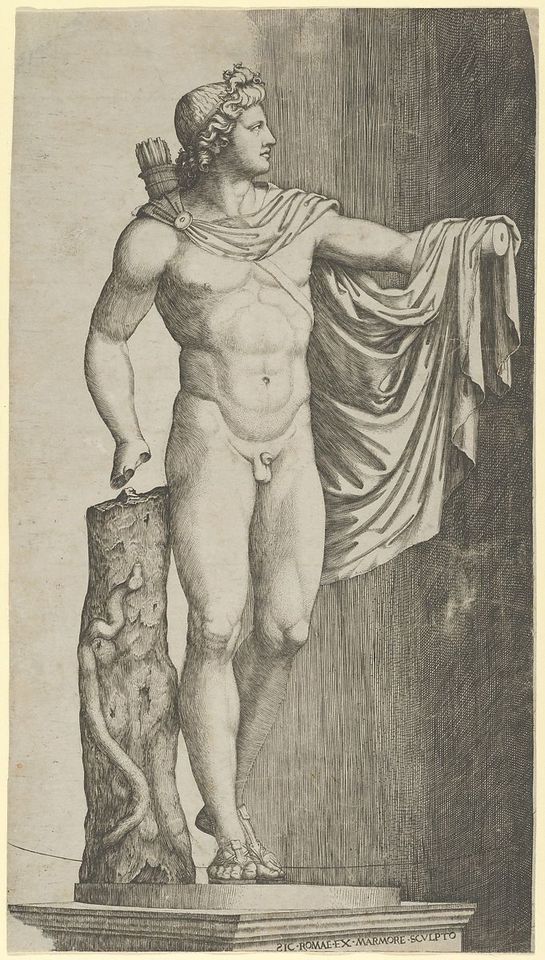

Apollo
1 artist unknown, Roman copy (c120CE) of a Greek bronze after Leochares (c350BCE) marble 224cm
2 Marcantonio Raimondi (1470/82-1534) Italian The Apollo Belvedere from the Vatican his left hand resting on the tree trunk around which coils a python (c1510–27) engraving
3 Albrecht Durer (1471-1528) German Adam and Eve (1507) oil on panel, each 209x81cm
A metmuseum.org The Apollo Belvedere was discovered near Rome in the late fifteenth century. Possibly a second-century marble copy of a bronze original by the Greek sculptor Leochares, the statue was immediately appreciated as a masterpiece and showered with praise. Probably once in the private collection of Cardinal Giuliano della Rovere (later Pope Julius II, r. 1503–13), it was moved to the Vatican in 1509 and placed, in 1511, in the Cortile del Belvedere, from which it derives its name. Raimondi's print became an important vehicle through which knowledge of the statue was transmitted far beyond the Vatican. He is famous for his many engravings after the designs of Raphael, including images such as the Judgment of Paris (19.74.1), scenes that, like the Apollo, illustrate Renaissance interest in classical antiquity and mythology. Here, Raimondi's mastery for replicating the effects of light on marble produces a convincing impression of the statue's form. Many artists incorporated the Apollo's much-lauded pose into their own work. Albrecht Dürer reverses the position of the figure's limbs and Apollo becomes Adam, reaching for the fruited branch offered by Eve in the 1504 engraving . A similar figure of Apollo, whose outstretched arm grasps—too late—a fleeing nymph, appears in the 1625 marble group Apollo and Daphne by the Roman Baroque sculptor Gian Lorenzo Bernini (1598–1680).
B Johann Winckelmann (1717-68) Germany Of all the works of antiquity that have escaped destruction, the statue of Apollo represents the highest ideal of art. (1755)
#apollo#adam#eve#classical#contraposto#belvedere#Marcantonio Raimondi#raimondi#leochares#winckelmann#bernini
8 notes
·
View notes
Text
As he masterminded these desperate and haphazard plans, Girolamo incurred the displeasure of the entire papal court and the permanent enmity of his cousin Cardinal Giuliano della Rovere. The cardinal had argued against the Pazzi conspiracy, but he had been overruled. Now, in the wake of the disaster, the pope heeded Cardinal Giuliano's vehement protest against Girolamo's fruitless actions. The count desisted, but the rift within the papal family was already widening. Girolamo realized that it was time to regain the pope's favor by producing an heir.
tbh its not even all of the book she just REALLY hates this one guy she just has a vitriolic hostility towards Girolamo Riario....
2 notes
·
View notes
Text

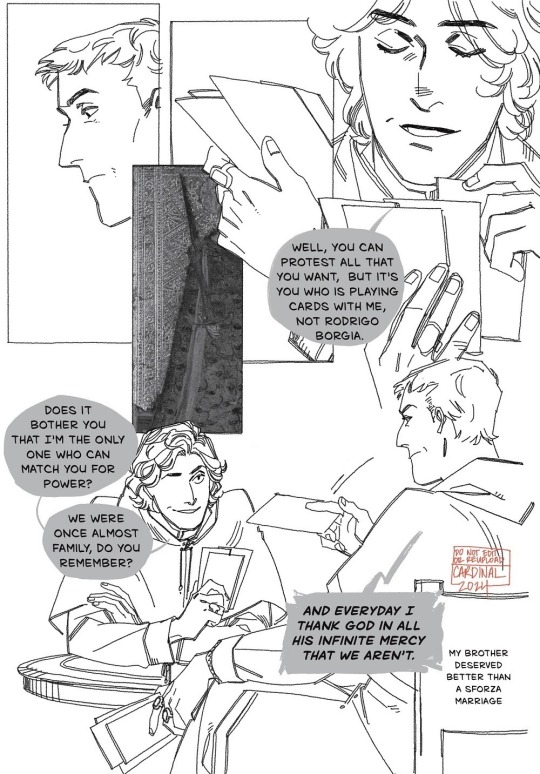
listen. listen, there's a kind of intimacy in having a dedicated rivalry, okay. who else is going to know you like this!!! also it's funny

Ascanio Maria Sforza: la parabola politica di un cardinale-principe del Rinascimento, Marco Pellegrini


Julius II: The Warrior Pope, Christine Shaw
and on della rovere’s soldier comment:
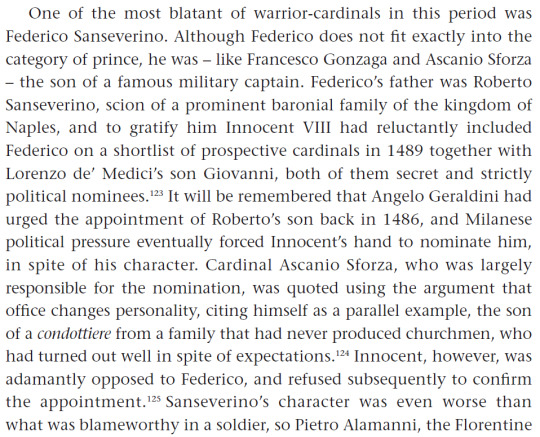
Popes, Cardinals and War: The Military Church in Renaissance and Early Modern Europe, D.S. Chambers
and finally! regarding the delightful Mess of political-family relationships, including the marriage comment (altho the montefeltro family that giovanni married into did have sforza family ties, since giovanna's mother was battista sforza, but this is about the more immediate alliance based relationship and della rovere's hand in the rejection of a milanese match for his brother. and. this is not even remotely a serious comic, but now I am once again thinking about insular all these families are. the fucking medicis are here too, if you go half a step to the left on della rovere's family tree)

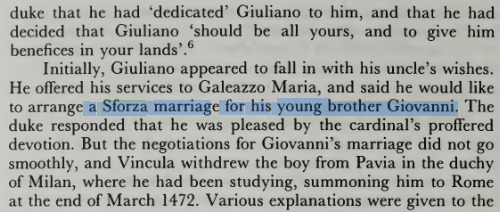
Julius II: The Warrior Pope, Christine Shaw
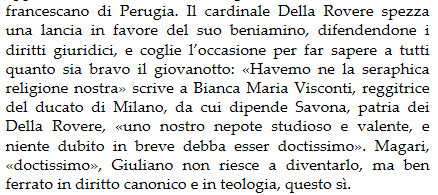
Giulio II, Il papa del Rinascimento, Giulio Busi (Bianca Maria Visconti is Ascanio's mom. btw)
panel inserts of the cards they're playing with are all from the Visconti-Sforza tarot deck! (I used public domain scans/photos for the comic itself)
ko-fi!⭐ bsky ⭐ pixiv ⭐ pillowfort ⭐ cohost ⭐ cara.app
#weeping. ascanio's dialogue covers up della rovere's sleeve collar. i spent all that time drawing details on it and FOR WHAT#(it was fun)#there was another deleted bit where ascanio has some petty line like 'i bet arguing makes you hard' but then i realized#that's something that lucullus would probably say to crassus and also i need to set that line up for ascanio#we gotta. we gotta character build (lays down face in the ground) we have to provide the character set up for it#it's really more of a line for cesare to drop at some point over how much rodrigo and ascanio argued#shout out to the time rodrigo threatened to throw ascanio into the tiber river or that time ascanio like. decided to physically get into#a fight with juan borgia#and they were still gambling partners after that????? damn okay. sometimes the vice chancellor can be (checks note) im not finishing#that statement#komiks tag#italian renaissance tag#ascanio sforza#giuliano della rovere#i WILL get a relationship dynamic tag for them once i can figure out something punchy and fun. anyway!#ehgh. I NEED. to go to milan. and go thru the archives. let me in. LET ME INNNNNNNNN
260 notes
·
View notes
Text
wethepope:

He had heard talk of this young man. They called him devout, they called him worthy. And yet it was not the young man’s faith that he regarded as such a strong factor in the necessity of having him here in the Holy City. There was more to it than what met the eye. As all of his plans he set out with a determination of expansion. And if they were able to tame the wild in the Americas. They would surely be able to make friends with the men that this one came from. He was eager to know secrets, eager to know what it was that drove them. And if they would convert. Very much like the church of many, many generations prior he sought of the conversion vigorously. The more friends the safer he would be. His logic seemed to be intelligent. And yet his insides were waning with fear.
He allowed the young man a private audience. Something his son was quite against. 'He could kill you,' Cesare had said. And yet he was more than determined to allow the man to believe he trusted him, he was honored to have him not only as a guest to the Holy City but also as a friend. He had the young man escorted once he had heard about his arrival, offered the finest rooms in the Vatican, made to feel like a king whereas he knew that he was only a messenger. Shooting the messenger brought war. Surely opening his arms wide for him would bring friendship.
He sent for the man. Eager to make his acquitance, to bestow on him a cardinals hat and make him apart of this Holy Church. They were to celebrate a Roman dance with he and the Vikings with the cardinals ; he would be Odin and Athelstan a wolf. The church was always in need of more souls to save, more souls to be added on. He couldn't feel he really trusted the cardinals, other than Ascanio Sforza, a mild mannered well-spoken man, yet assured of his family at least, of sweet Lucrezia, his angel of heaven, as well as cardinal fighter Cesare, and soldier Juan. And Borgia was always in need of more allies. Cesare didn't trust Ascanio's mellow manner, liked Giuliano Della Rovere's cunning, while knowing he was their enemy.
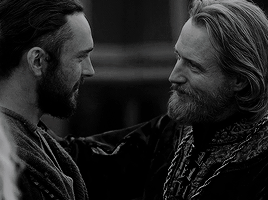
Athelstan and the other Vikings had arrived here in Rome, and heard about the Pope’s request to speak to him face-to-face. Athelstan discussed about this curious but not unwelcome proposal, with the Vikings, and more so with Ragnar. Eventually, they drew the conclusion that this may be something that could benefit both parties.
Of course, it seemed logical that Athelstan was to be the voice, the person to evoke peace between both parties. He surmised this was because he could speak English perfectly, along with several other languages. He misses being with Ragnar and his family he grew to love in Kattegat, yet knowing they were still present, he touching his arm ring.
The Vatican palace that he was escorted to, was grand and exquisitely elaborate ; glowing golden in its illumination -- sunlight streaming through the window ( warming his body of hollow blood sickness ), and so was the room he had been generously granted for his stay here. It had white branches of trees by the window. It additionally held indescribably beautiful artworks, like men with wide bird wings, with feathers. Some of them reminded him a bit of the ones he learnt about in the court of Charlemagne. He paused for a moment to admire them before the Pope’s escorts kindly urged him to continue on.
He finally reached the throne room which the Pope was residing in.
He paused when he was a few feet away from the throne steps. Kneeling down to the ground, he bows his head respectfully towards the Pope.
“Holy Father. My name is Athelstan. It is a pleasure to make your acquaintance.”
"And we find it a pleasure to meet you, Athelstan," Rodrigo says in his sonorous voice. They speak about alliance, he handing him a red elaborate hat, and Athelstan thinks a cardinal would surely be different to a monk, as he touches the felt, yet both were with god.
0 notes
Text

Tra il 1483 e il 1487, il Cardinale Giuliano della Rovere, futuro papa Giulio II, fece costruire a sue spese il castello di Ostia. La struttura difensiva era a guardia del Tevere, ma era anche sede privilegiata per il vescovo titolare della vicina chiesa di Sant’Aurea. Per questa ragione la rocca venne dotata di una serie di comodità.
Between 1483 and 1487, Cardinal Giuliano della Rovere, the future Pope Julius II, built Ostia Castle at his own expense. The structure defended the Tiber, and was also a privileged seat for the titular bishop of the nearby church of Sant'Aurea. For this reason, the fortress was equipped with a series of comforts.
📸 by danieleatz via IG
#VisitRome Parco Archeologico di Ostia Antica
1 note
·
View note
Photo
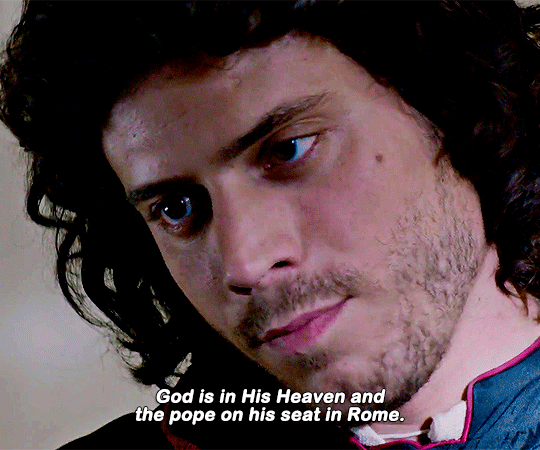

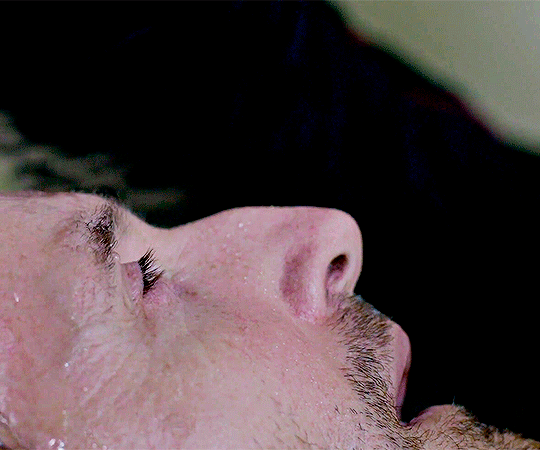

— Don't worry, if you're not dead by now, you will live. Your tongue will be swollen for days. No talking, I'm afraid. All of your prayers must be silent ones. Altar boys and cantarella. Neither can be trusted. But you must know by now, Cardinal, there is no hiding place. Even here, in the depths of the Umbrian olive groves... we will find you.
THE BORGIAS (2011-2013)
#the borgias#perioddramaedit#theborgiasedit#gifshistorical#cesare borgia#giuliano della rovere#userhayf#tuserlou#userclayy#userjasmine#tusershay#françois arnaud#ours#by tha
190 notes
·
View notes
Text
From an essay I think about often:
The Borgias, episode 1. We are facing the papal election of 1492. Another Cardinal confronts Rodrigo Borgia in a hallway. It has just come out that Borgia has been committing simony, i.e. taking bribes. Our modern audience is shocked! Shocked, I say! That a candidate for the papacy would be corrupt and take bribes! Our daring Cardinal confronts Borgia, saying he too is shocked! Shocked! This is no longer a matter of politics but principle! He will oppose Borgia with all his power, because Borgia is a bad person and should not sit on the Throne of St. Peter!
See, audience! Now is the time to be shocked! No. This is not the Renaissance, this is modern sensibilities about what we think should’ve been shocking in the Renaissance. After the election this same Cardinal will be equally shocked that the Holy Father has a mistress, and bastards. Ooooh. Because that would be shocking in 2001, but in 1492 this had been true of every pope for the past century.
In fact, Cardinal Shocked-all-the-time, according to the writers you are supposed to be none other than Giuliano della Rovere. Giuliano “Battle-Pope” della Rovere! You have a mistress! And a daughter! And a brothel! And an elephant! And take your elephant to your brothel! And you’re stalking Michelangelo! And foreign powers lent you 300,000 ducats to spend bribing other people to vote for you in this election! And we’re supposed to believe you are shocked by simony? That is not historicity. It is applying some historical names to some made-up dudes and having them lecture us on why be should be shocked.
0 notes